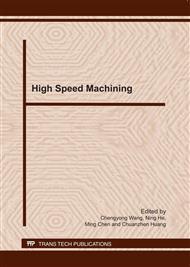p.697
p.701
p.705
p.711
p.717
p.723
p.729
p.733
p.739
Numerical Investigation on Particle Velocity in Cold Spraying of Hydroxyapatite Coating
Abstract:
Hydroxyapatite (HA) is a calcium phosphate ceramics and HA coating is essential for the medical metallic implants. This paper presents a novel cold spraying method for the formation of HA coatings instead of the commonly used thermal spraying method. The HA particle velocity in the cold spraying process is investigated numerically using a computational fluid dynamics (CFD) program, FLUENT. Stress is laid on how the geometric parameters of the nozzle and the process parameters influence the particle velocity. A Taguchi’s orthogonal array is employed to arrange the simulation conditions and the simulation results are analyzed by analysis of variance (ANOVA) method to reveal the main factors influencing HA particle acceleration significantly. The changes of the HA particle velocity under different cold spraying conditions are simulated to clarify the effects of the nozzle geometry, accelerating gas condition and property of particle itself on HA particle acceleration.
Info:
Periodical:
Pages:
717-722
Citation:
Online since:
March 2011
Authors:
Keywords:
Price:
Сopyright:
© 2011 Trans Tech Publications Ltd. All Rights Reserved
Share:
Citation:


